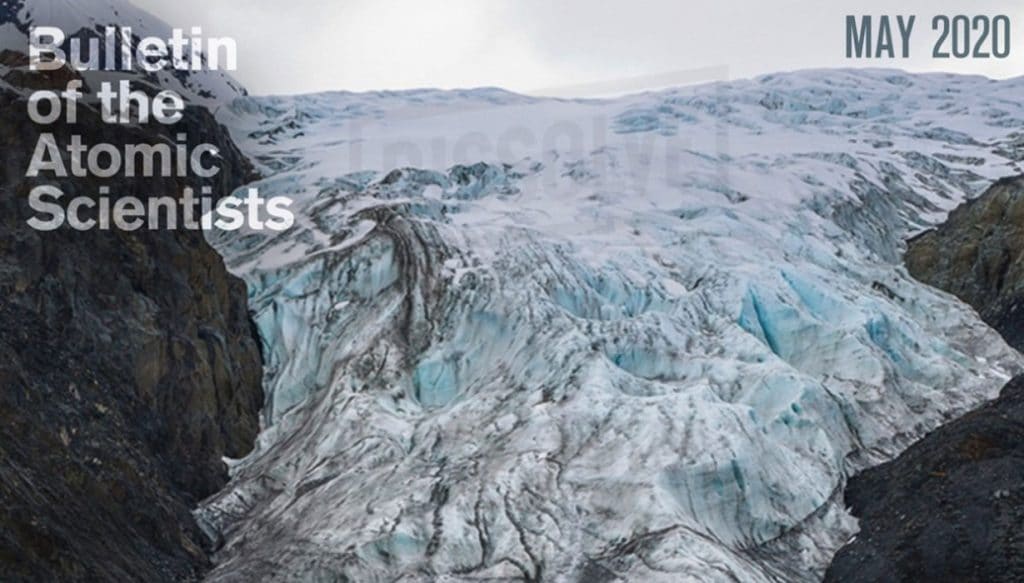By John Mecklin
 There is an entire literature focused on improved communication of accurate information on climate change to general audiences, particularly general audiences at least sprinkled with – and in the United States, sometimes dominated by – climate change deniers. The advice from those who research climate change communication goes in many directions. To better reach those unconvinced that Earth is warming and human activity is the cause, one might try reducing use of the term “climate change,” instead speaking in terms of “resilience” to natural disasters of the sort climate change causes. One could employ non-scientist messengers, using, for example, trusted Republican or conservative spokespeople to communicate the reality of climate change to Republican or conservative audiences. Most anyone who has dealt much with the issue knows it also helps to include some sense of hope in your climate stories, and if possible, action items ordinary citizens can use to make a difference. After all, convincing your audience that climate change is real and caused by human activity – mainly, the burning of fossil fuels that release the greenhouse gas carbon dioxide into the atmosphere – won’t do much good, if at the same time you convince your readers that the fight to arrest climate change is a lost cause.
There is an entire literature focused on improved communication of accurate information on climate change to general audiences, particularly general audiences at least sprinkled with – and in the United States, sometimes dominated by – climate change deniers. The advice from those who research climate change communication goes in many directions. To better reach those unconvinced that Earth is warming and human activity is the cause, one might try reducing use of the term “climate change,” instead speaking in terms of “resilience” to natural disasters of the sort climate change causes. One could employ non-scientist messengers, using, for example, trusted Republican or conservative spokespeople to communicate the reality of climate change to Republican or conservative audiences. Most anyone who has dealt much with the issue knows it also helps to include some sense of hope in your climate stories, and if possible, action items ordinary citizens can use to make a difference. After all, convincing your audience that climate change is real and caused by human activity – mainly, the burning of fossil fuels that release the greenhouse gas carbon dioxide into the atmosphere – won’t do much good, if at the same time you convince your readers that the fight to arrest climate change is a lost cause.
For this issue of the Bulletin, I decided to try what I call the “so deny this” approach, asking our authors to offer concrete, indisputable evidence that climate change is happening right now, right before our eyes, along with clear explanations of why that physical evidence can’t reasonably be explained, except as a result of warming caused by greenhouse gas emissions. The climate change they describe is not some vague theoretical effect that will come in the year 2100. It is here, now:
Just returned from Antarctica, Peter Davis of the British Antarctic Survey explains the changes he’s seen in the Thwaites Glacier: huge amounts of ice sliding off into the sea, more ice melting where land meets sea, and the steady retreat of the glacier’s grounding zone deeper inland.
Biologist Pamela Templer of Boston University delves into the decades of evidence showing shorter winters, less cold, less snow, and a considerably changed landscape in New Hampshire’s Hubbard Brook Experimental Forest.
Brian Brettschneider, a research associate at the International Arctic Research Center in Alaska, says that the last few years have brought not only record-low sea ice in the Bering Sea and unprecedented Arctic wildfires but also changes that are less stark – shifting tree lines, glacial melt, and changing vegetation.
Joan VanDervort, an advisory board member for the Center for Climate and Security and the International Military Council on Climate and Security, writes compellingly about the economic and physical havoc climate change has already wrought – through flooding caused by rising seas and worsening storms, wildfire, and melting permafrost – on US military bases across the country and around the world.
And environmental scientist and author Dana Nuccitelli presents the overwhelming scientific evidence that global warming is happening and human-caused – evidence so overwhelming that there is a 90 to 100 percent expert consensus on the phenomenon.
Please share the articles in this issue of the magazine with anyone you know who disbelieves in or is unsure about the science of climate change, and let me know the responses you get, even if – especially if – they are continued denial. Bad news is generally most useful when delivered immediately.1
No comments:
Post a Comment